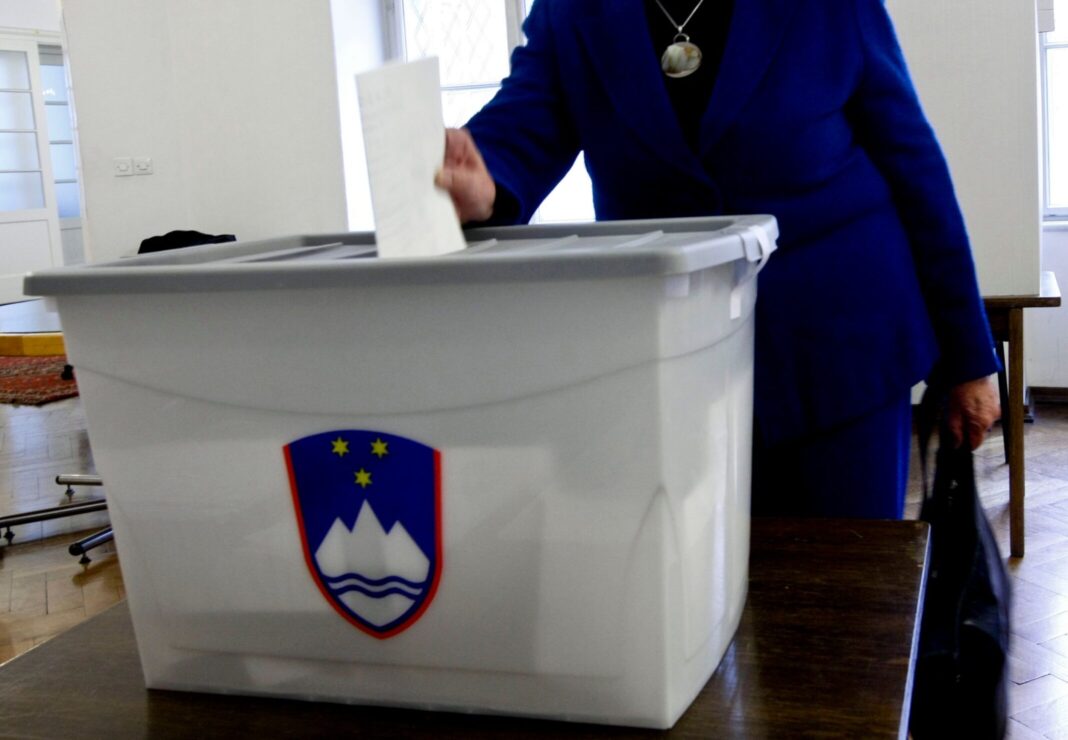By: Ivan Šokić / Nova24tv
According to the latest results of Parsifal’s public opinion poll, a large growth is recorded by parties that are in favour of cooperation and integration in the development coalition. Such results indicate that it is important for a good part of the participants in the survey that the party to which they will entrust their vote in the National Assembly act constructively. Left wing parties operating deliberately exclusionary do not record noteworthy growth. The Slovenian Democratic Party is still leading among the parties.
According to the latest opinion polls conducted for Nova24TV by the Parsifal agency, most people would trust the SDS in the elections. The largest center-right party in the country would be supported by 15.4 percent of respondents. In second place with 10.8 percent of the vote is SD, followed by the Levica with 8.5 percent. LMŠ would get 7.7 percent of the vote, Movement Povežimo Slovenijo 4.6 percent of the vote, SAB 4.1 percent of the vote, SNS 3.3 percent of the vote, NSi 2.7 percent of the vote, just like DeSUS, Naša Dežela 2.3 percent of the vote, Pirati 1.5 percent, SMC 1.1 percent, Dobra država 0.8, and Z.Dej 0.2 percent of the vote.
None of the listed votes would be supported by 11.5 percent of respondents, 8.4 percent of respondents would not go to the polls, any other party would be supported by 0.6 percent of respondents, while 13.9 percent of respondents do not know which party they would support. The share of undecided voters represents 34.4 percent of respondents.
Among those decided, 23.5 percent of respondents would vote the SDS, 16.5 percent for SD, 12.9 percent for Levica, 11.8 percent for LMŠ, 7.1 percent for the Movement Povežimo slovenijo, 6.3 percent for SAB, 5 percent for SNS, 4.1 percent for NSi, just as much as DeSUS, 3.5 percent for Naša dežela, 2.3 percent for Pirati, 1.6 percent for SMC, 1.1 percent for Dobra država, and 0.2 percent for Z.Dej.
Among those who will definitely take part in the elections, SDS would be supported by 20.3 percent of respondents, SD by 15.3 percent of respondents, Levica by 8.6 percent, LMŠ by 7.6 percent, Movement Povežimo Slovenijo by 5.8 percent, SAB by 4.2 percent, NSi by 3 percent, Naša dežela by 2.5 percent, SNS by 2.4 percent, just as much DeSUS, SMC by 1.4 percent, as much Pirati, Dobra država by 0.3 percent, and Z.Dej by 0.2 percent. 6.2 percent of respondents who would definitely attend the elections would not vote for any party, 17.6 percent do not know which party they would support, and 0.9 percent of voter, who would definitely vote, would vote for any other party.
Among the decided voters who will definitely take part in the elections, 26.9 percent of respondents would vote for SDS, 20.3 percent of respondents would support SD, 11.4 percent of respondents would vote for Levica, 10 percent for LMŠ, 7.7 percent for Movement Povežimo Slovenijo, 5.5 percent for SAB, NSi would receive 4 percent of the vote, Naša dežela 3.3 percent, SNS 3.2 percent, the same goes for DeSUS, SMC 1.8 percent, just as much Pirati, Dobra država 0.4 percent, and Z.Dej 0.3 percent.
According to the results of the polls, among others, the SNS, the Movement Povežimo Slovenijo, the SMC and Naša dežela recorded a noticeable increase in support. These are smaller parties or groups of parties, which were recognised by the surveyed voters thanks to their constructive and connecting attitude. This is also confirmed by the growing share of those who would certainly participate in the upcoming elections. Among the asked, 53 percent of them are like that.
Growing support for parties for the development coalition
Thus, we can conclude that people have enough constant quarrels and promises from parties with which not everyone will cooperate under any circumstances. Parliamentary democracy requires cooperation, and the electorate is aware of this, which does not see the need for everyday life in parliament to be reminiscent of telenovelas. After all, the temple of democracy is dedicated to the common search for the best possible solutions for as many citizens as possible. Participation in a development coalition is such a solution.
The survey, conducted between August 30th and September 2nd, included 719 respondents, of whom 50 percent were women and 50 percent were men. The mean age was 52.3 years and the standard deviation was 16.6 years. The majority of respondents were from the oldest age group (44.2 percent), the middle age group was slightly less represented (37.4 percent) and the youngest age group was the least represented (18.4 percent). Most respondents have completed secondary school (32.1 percent), followed by those with completed higher education (26.8 percent), 22.2 percent of respondents have a vocational school, and 18.9 percent of respondents have completed primary or incomplete primary school. Most respondents come from a village or hamlet (53.2 percent), followed by a town (29.0 percent) and a smaller city (17.8 percent). Most respondents come from the Osrednjeslovenska region (24.2 percent), followed by Podravska (15.8 percent) and Savinjska region (12.4 percent).

